Abstract
To obtain more accurate information about respiratory function in the elderly, we carried out spirometry and constructed maximum expiratory flow-volume curves in 136 volunteers over the age of 60 years (90 women, 46 men). Significant age related differences were found. Although vital capacity appeared well preserved in all groups, mid expiratory flow rates were low, even in lifelong non-smokers. On the basis of previous work, many of the subjects in this study would have been assessed as having small airways obstruction. The number of subjects is larger than in previous studies of airflow in this age group. Old people have often smoked, and many have a history of cardiovascular disease. Such individuals were included provided that they were fit and active for their age, and had no overt respiratory disease. It is argued that our findings will be of more clinical relevance to the elderly population than values derived either from population studies or studies that have used rigorous selection criteria to exclude subjects who smoked or had a history of non-respiratory disease.
Full text
PDF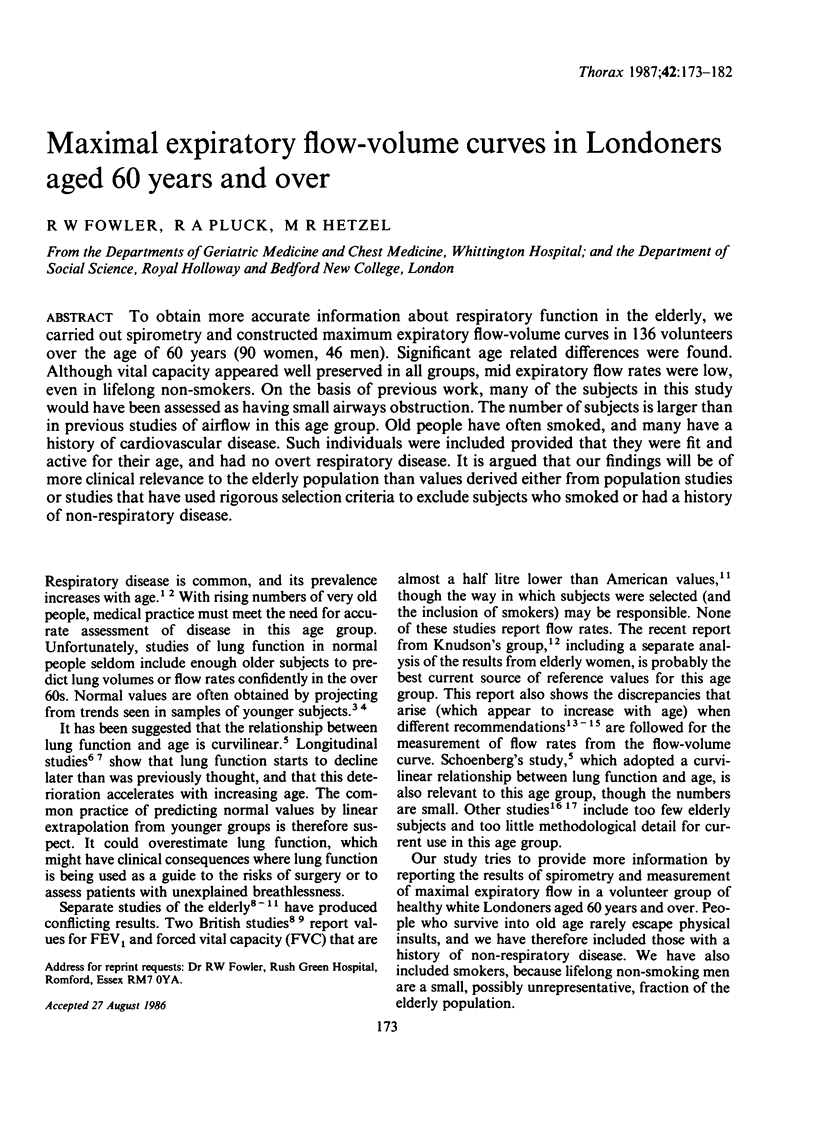
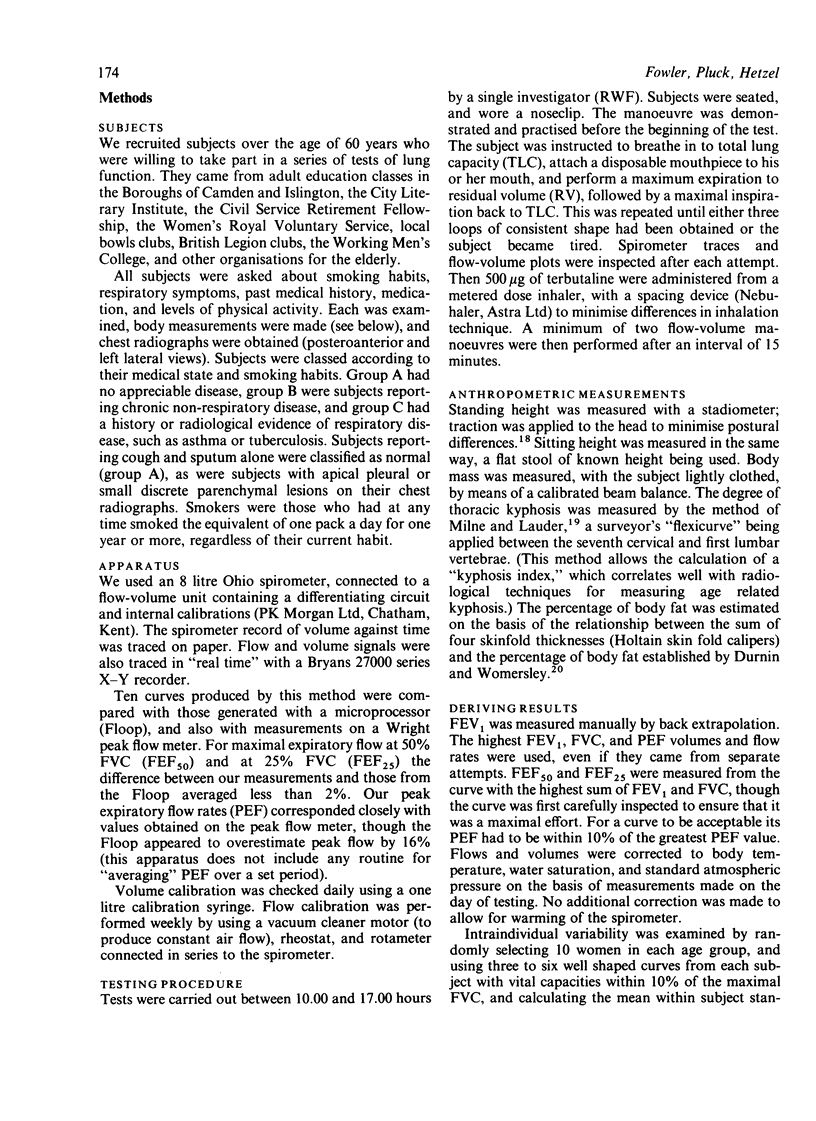
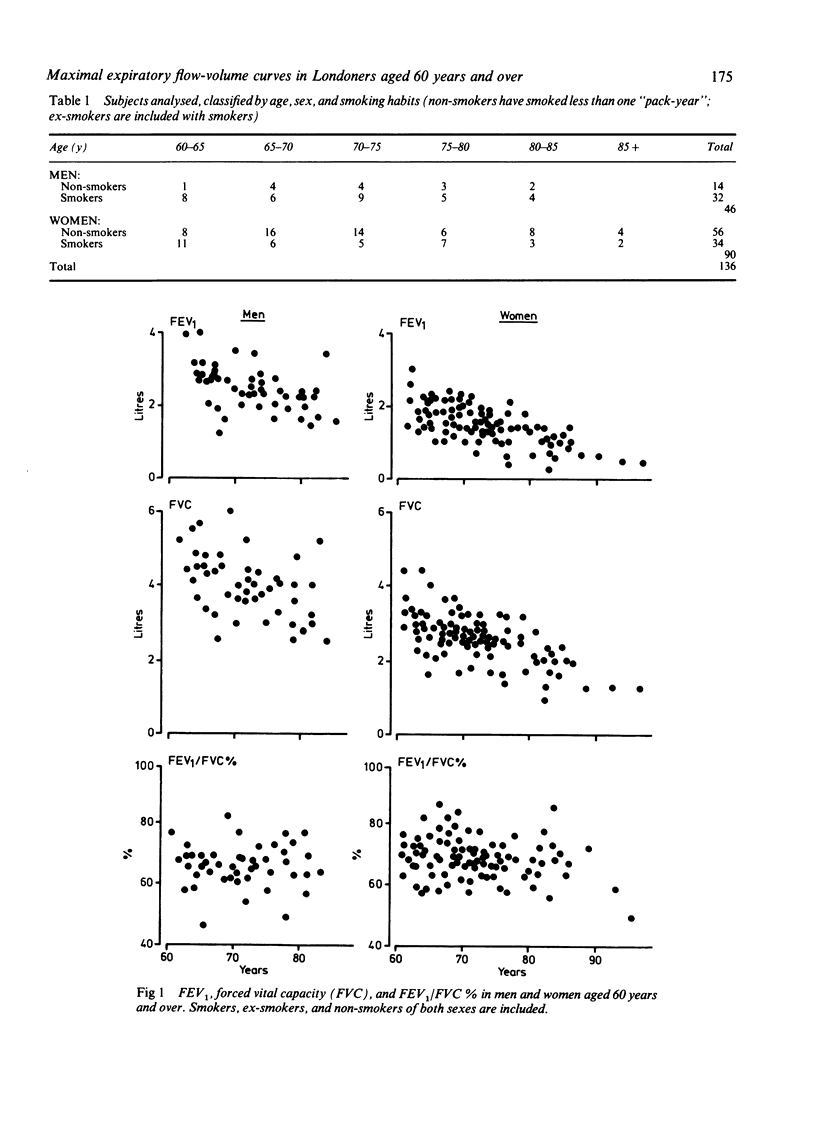

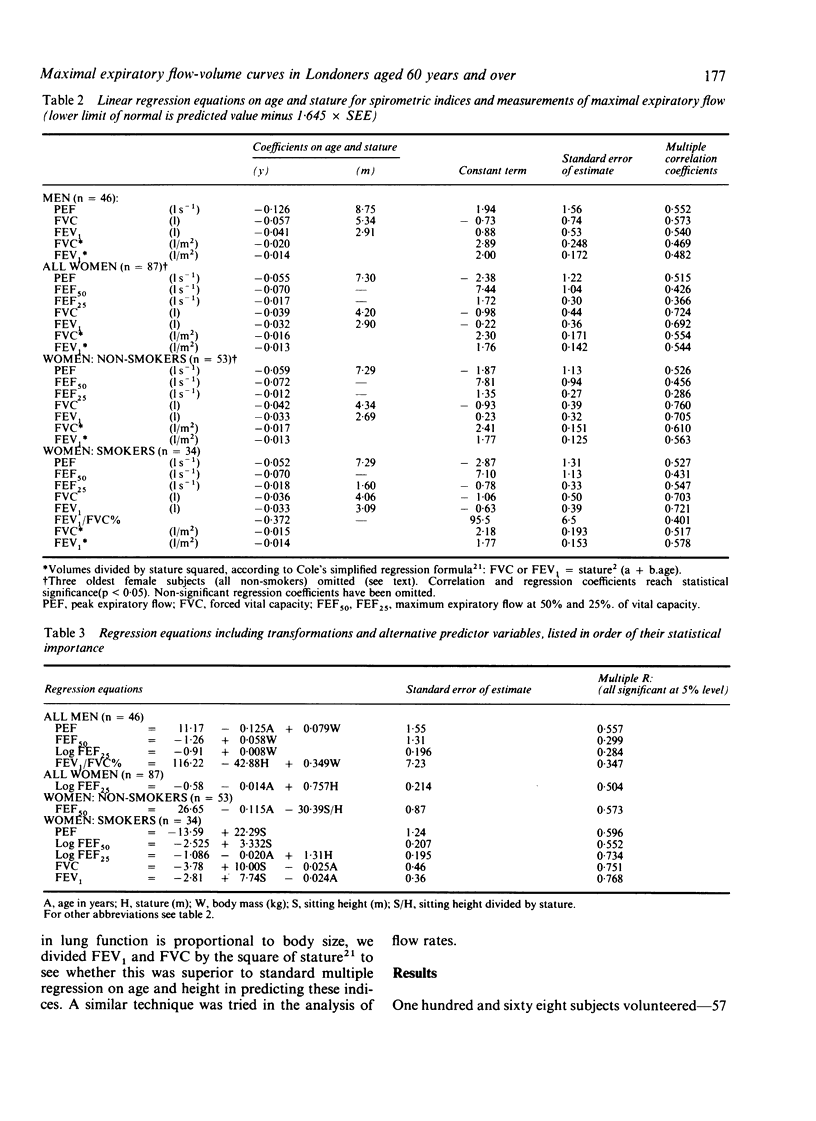
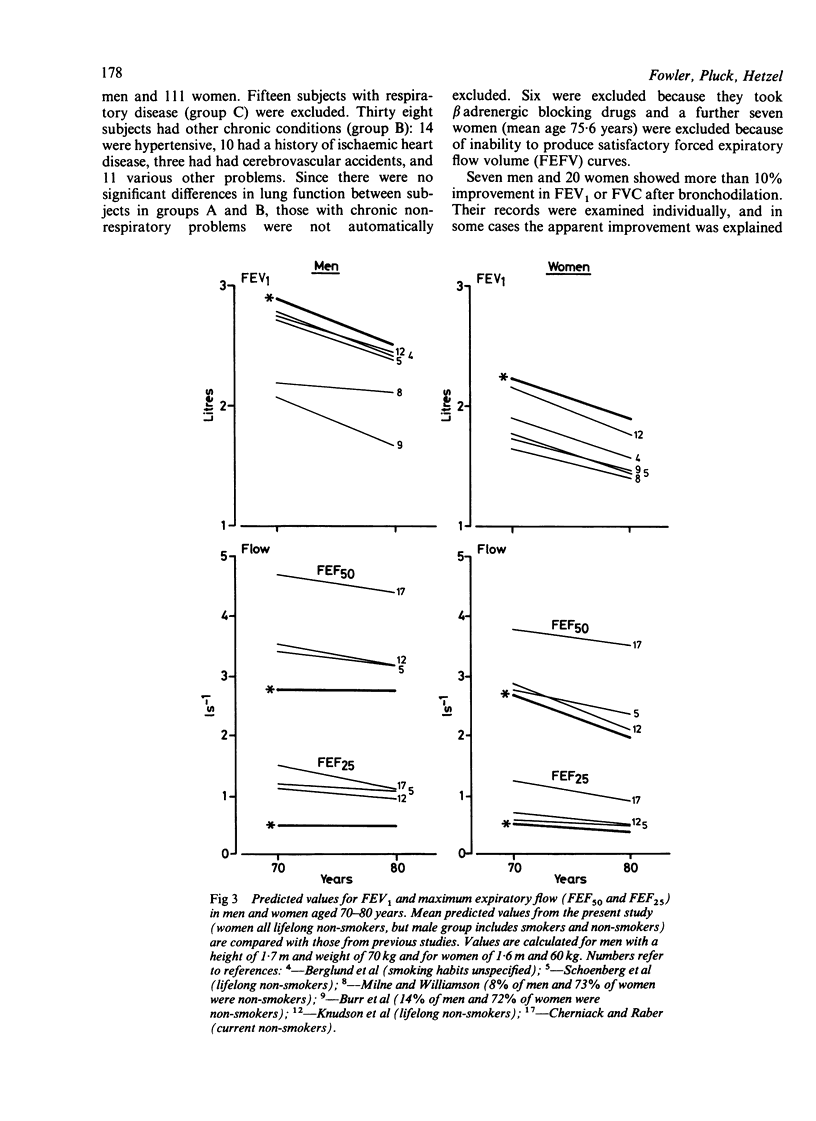
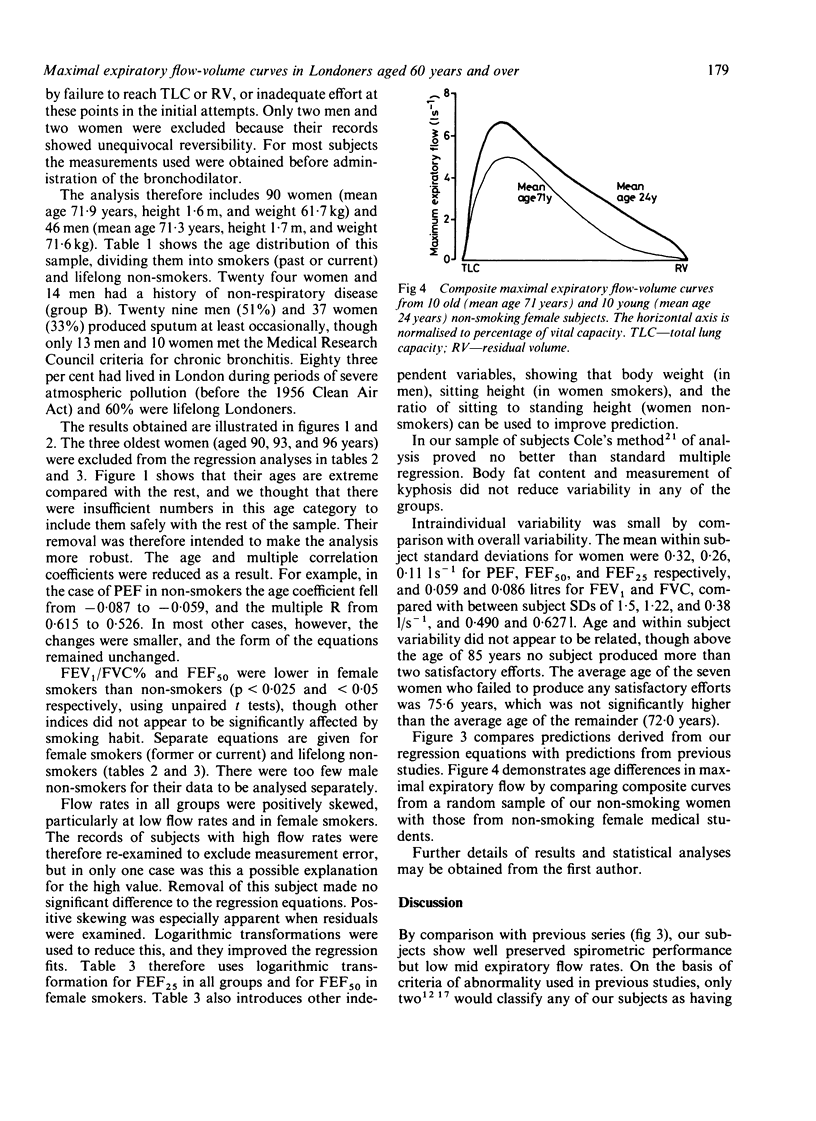

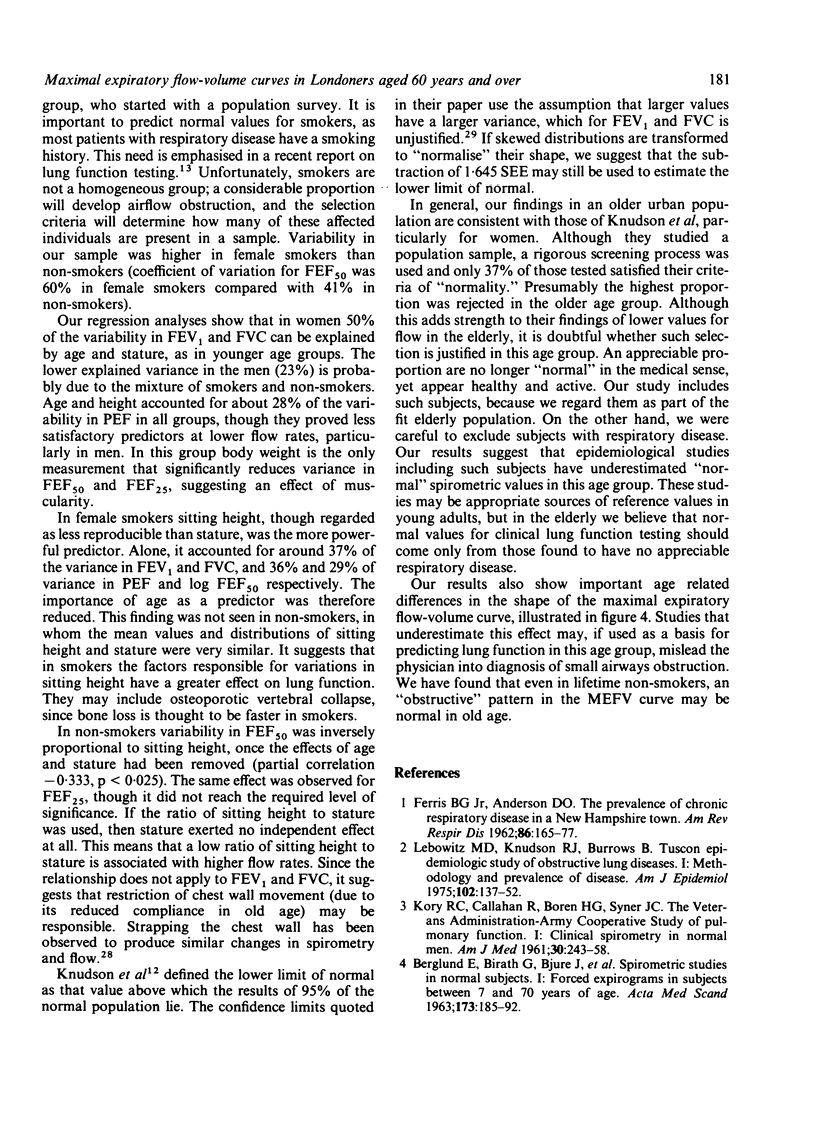
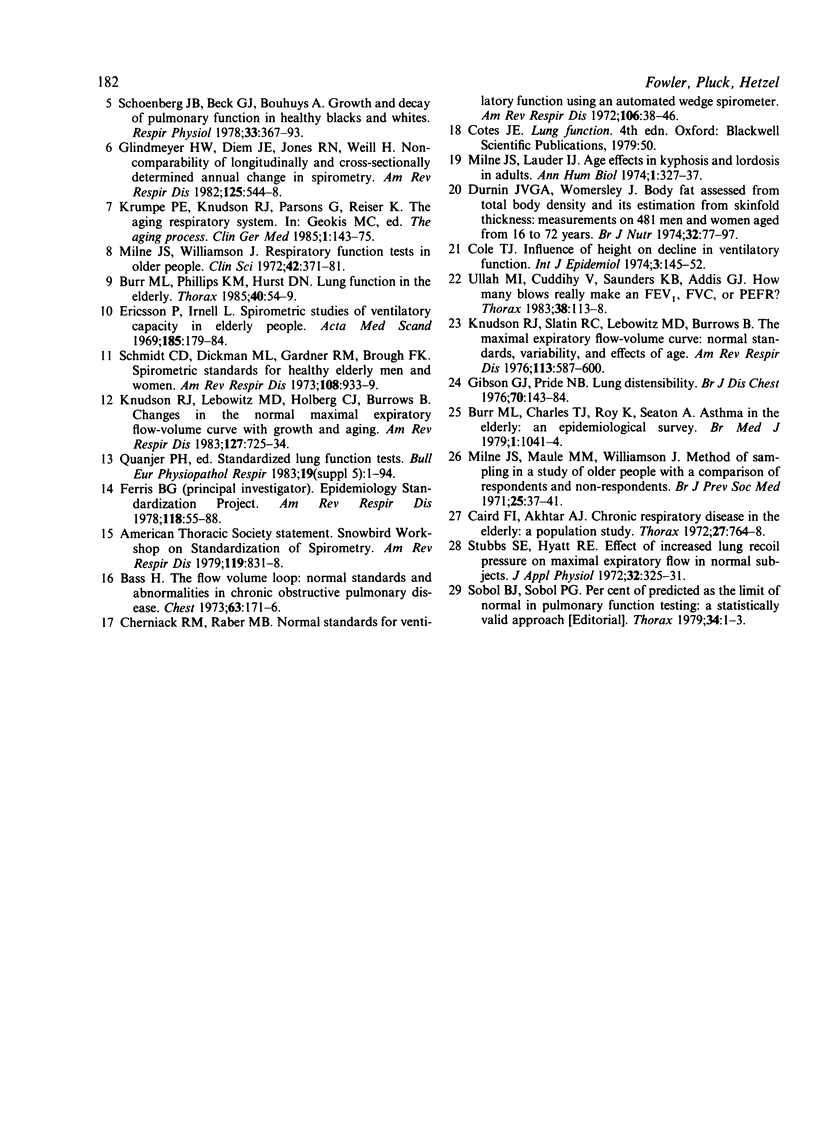
Selected References
These references are in PubMed. This may not be the complete list of references from this article.
- BERGLUND E., BIRATH G., BJURE J., GRIMBY G., KJELLMER I., SANDQVIST L., SODERHOLM B. Spirometric studies in normal subjects. I. Forced expirograms in subjects between 7 and 70 years of age. Acta Med Scand. 1963 Feb;173:185–192. [PubMed] [Google Scholar]
- Bass H. The flow volume loop: normal standards and abnormalities in chronic obstructive pulmonary disease. Chest. 1973 Feb;63(2):171–176. doi: 10.1378/chest.63.2.171. [DOI] [PubMed] [Google Scholar]
- Burr M. L., Charles T. J., Roy K., Seaton A. Asthma in the elderly: an epidemiological survey. Br Med J. 1979 Apr 21;1(6170):1041–1044. doi: 10.1136/bmj.1.6170.1041. [DOI] [PMC free article] [PubMed] [Google Scholar]
- Burr M. L., Phillips K. M., Hurst D. N. Lung function in the elderly. Thorax. 1985 Jan;40(1):54–59. doi: 10.1136/thx.40.1.54. [DOI] [PMC free article] [PubMed] [Google Scholar]
- Caird F. I., Akhtar A. J. Chronic respiratory disease in the elderly. A population study. Thorax. 1972 Nov;27(6):764–768. doi: 10.1136/thx.27.6.764. [DOI] [PMC free article] [PubMed] [Google Scholar]
- Cherniack R. M., Raber M. B. Normal standards for ventilatory function using an automated wedge spirometer. Am Rev Respir Dis. 1972 Jul;106(1):38–46. doi: 10.1164/arrd.1972.106.1.38. [DOI] [PubMed] [Google Scholar]
- Cole T. J. The influence of height on the decline in ventilatory function. Int J Epidemiol. 1974 Jun;3(2):145–152. doi: 10.1093/ije/3.2.145. [DOI] [PubMed] [Google Scholar]
- Durnin J. V., Womersley J. Body fat assessed from total body density and its estimation from skinfold thickness: measurements on 481 men and women aged from 16 to 72 years. Br J Nutr. 1974 Jul;32(1):77–97. doi: 10.1079/bjn19740060. [DOI] [PubMed] [Google Scholar]
- Ericsson P., Irnell L. Spirometric studies of ventilatory capacity in elderly people. Acta Med Scand. 1969 Mar;185(3):179–184. doi: 10.1111/j.0954-6820.1969.tb07317.x. [DOI] [PubMed] [Google Scholar]
- FERRIS B. G., Jr, ANDERSON D. O. The prevalence of chronic respiratory disease in a New Hampshire town. Am Rev Respir Dis. 1962 Aug;86:165–177. doi: 10.1164/arrd.1962.86.2.165. [DOI] [PubMed] [Google Scholar]
- Gibson G. J., Pride N. B. Lung distensibility. The static pressure-volume curve of the lungs and its use in clinical assessment. Br J Dis Chest. 1976 Jul;70(3):143–184. doi: 10.1016/0007-0971(76)90027-9. [DOI] [PubMed] [Google Scholar]
- Glindmeyer H. W., Diem J. E., Jones R. N., Weill H. Noncomparability of longitudinally and cross-sectionally determined annual change in spirometry. Am Rev Respir Dis. 1982 May;125(5):544–548. doi: 10.1164/arrd.1982.125.5.544. [DOI] [PubMed] [Google Scholar]
- KORY R. C., CALLAHAN R., BOREN H. G., SYNER J. C. The Veterans Administration-Army cooperative study of pulmonary function. I. Clinical spirometry in normal men. Am J Med. 1961 Feb;30:243–258. doi: 10.1016/0002-9343(61)90096-1. [DOI] [PubMed] [Google Scholar]
- Knudson R. J., Lebowitz M. D., Holberg C. J., Burrows B. Changes in the normal maximal expiratory flow-volume curve with growth and aging. Am Rev Respir Dis. 1983 Jun;127(6):725–734. doi: 10.1164/arrd.1983.127.6.725. [DOI] [PubMed] [Google Scholar]
- Knudson R. J., Slatin R. C., Lebowitz M. D., Burrows B. The maximal expiratory flow-volume curve. Normal standards, variability, and effects of age. Am Rev Respir Dis. 1976 May;113(5):587–600. doi: 10.1164/arrd.1976.113.5.587. [DOI] [PubMed] [Google Scholar]
- Krumpe P. E., Knudson R. J., Parsons G., Reiser K. The aging respiratory system. Clin Geriatr Med. 1985 Feb;1(1):143–175. [PubMed] [Google Scholar]
- Lebowitz M. D., Knudson R. J., Burrows B. Tucson epidemiologic study of obstructive lung diseases. I: Methodology and prevalence of disease. Am J Epidemiol. 1975 Aug;102(2):137–152. doi: 10.1093/oxfordjournals.aje.a112141. [DOI] [PubMed] [Google Scholar]
- Milne J. S., Lauder I. J. Age effects in kyphosis and lordosis in adults. Ann Hum Biol. 1974 Jul;1(3):327–337. doi: 10.1080/03014467400000351. [DOI] [PubMed] [Google Scholar]
- Milne J. S., Maule M. M., Williamson J. Method of sampling in a study of older people with a comparison of respondents and non-respondents. Br J Prev Soc Med. 1971 Feb;25(1):37–41. doi: 10.1136/jech.25.1.37. [DOI] [PMC free article] [PubMed] [Google Scholar]
- Milne J. S., Williamson J. Respiratory function tests in older people. Clin Sci. 1972 Mar;42(3):371–381. doi: 10.1042/cs0420371. [DOI] [PubMed] [Google Scholar]
- Schmidt C. D., Dickman M. L., Gardner R. M., Brough F. K. Spirometric standards for healthy elderly men and women. 532 subjects, ages 55 through 94 years. Am Rev Respir Dis. 1973 Oct;108(4):933–939. doi: 10.1164/arrd.1973.108.4.933. [DOI] [PubMed] [Google Scholar]
- Schoenberg J. B., Beck G. J., Bouhuys A. Growth and decay of pulmonary function in healthy blacks and whites. Respir Physiol. 1978 Jun;33(3):367–393. doi: 10.1016/0034-5687(78)90063-4. [DOI] [PubMed] [Google Scholar]
- Sobol B. J., Sobol P. G. Per cent of predicted as the limit of normal in pulmonary function testing: a statistically valid approach. Thorax. 1979 Feb;34(1):1–3. doi: 10.1136/thx.34.1.1. [DOI] [PMC free article] [PubMed] [Google Scholar]
- Stubbs S. E., Hyatt R. E. Effect of increased lung recoil pressure on maximal expiratory flow in normal subjects. J Appl Physiol. 1972 Mar;32(3):325–331. doi: 10.1152/jappl.1972.32.3.325. [DOI] [PubMed] [Google Scholar]
- Ullah M. I., Cuddihy V., Saunders K. B., Addis G. J. How many blows really make an FEV1, FVC, or PEFR? Thorax. 1983 Feb;38(2):113–118. doi: 10.1136/thx.38.2.113. [DOI] [PMC free article] [PubMed] [Google Scholar]


